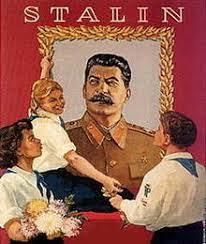Class 10 Exam > Class 10 Notes > History for GCSE/IGCSE > Stalin's Methods to Control the Soviet Union
Stalin's Methods to Control the Soviet Union | History for GCSE/IGCSE - Class 10 PDF Download
| Table of contents |

|
| Did Stalin Rule by Fear or Love? - Summary |

|
| The NKVD |

|
| The GULAG System |

|
| Show Trials |

|
| Propaganda and the Cult of Stalin |

|
| Culture in Stalin's Regime |

|
Did Stalin Rule by Fear or Love? - Summary
- Stalin's governance of the USSR was predominantly driven by fear rather than affection. He cultivated a cult of personality and utilized propaganda to present himself as a popular leader. Nonetheless, his regime relied heavily on repression, intimidation, and violence.
- Fear tactics were also instrumental in stifling dissent under Stalin's rule. The state would apprehend individuals without evidence of wrongdoing, subject them to show trials with predetermined guilty verdicts, and sentence them to forced labor camps or execution. These coercive methods fostered an atmosphere of terror, ensuring compliance with the regime's mandates.
- Despite the propaganda portraying Stalin as a beloved paternal figure and the savior of the Soviet populace, the truth was that his rule was characterized by fear and the ruthless elimination of perceived adversaries.
The NKVD
- Communist Russia had a secret police
- From 1917 to 1922, it was called the Cheka
- From 1922 to 1934, it was called the OGPU
- The NKVD was formed in 1934. It combined all forms of the military and general police force into one organization. Its full name was the People's Commissariat for Internal Affairs.
Role of the NKVD
- The principal task assigned to the NKVD by the government was the eradication of political adversaries.
- During Stalin's era, the NKVD executed the Great Purges, a campaign characterized by widespread political repression.
- Arrests made by the NKVD did not require substantial evidence or witnesses.
- Starting from 1935, the NKVD had the authority to try children as young as 12 years old as adults.
What Tactics did the NKVD use?
- If workers violated workplace regulations, they were subject to fines or job termination.
- Violations could lead to financial penalties or dismissal from employment.
- Penalties included fines.
- Dismissal was a consequence for breaking rules.
- The NKVD utilized even more severe measures to enforce control.
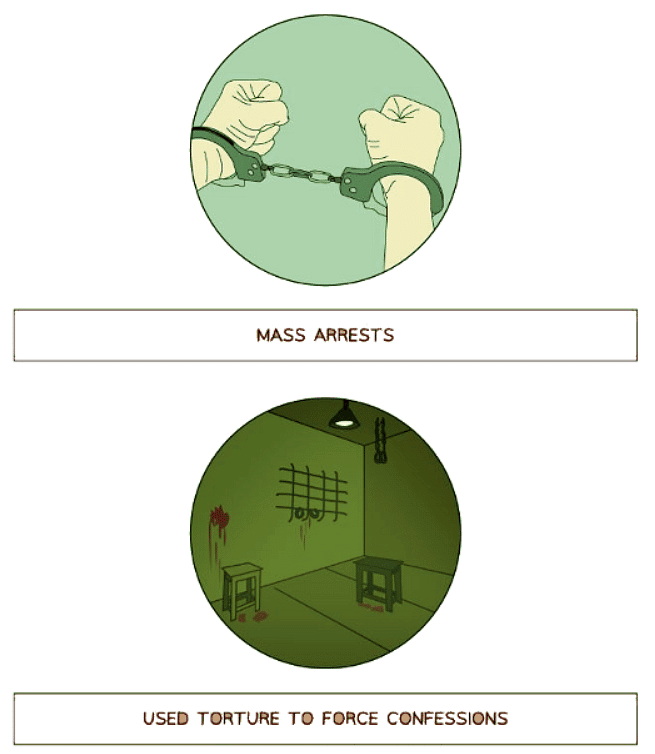
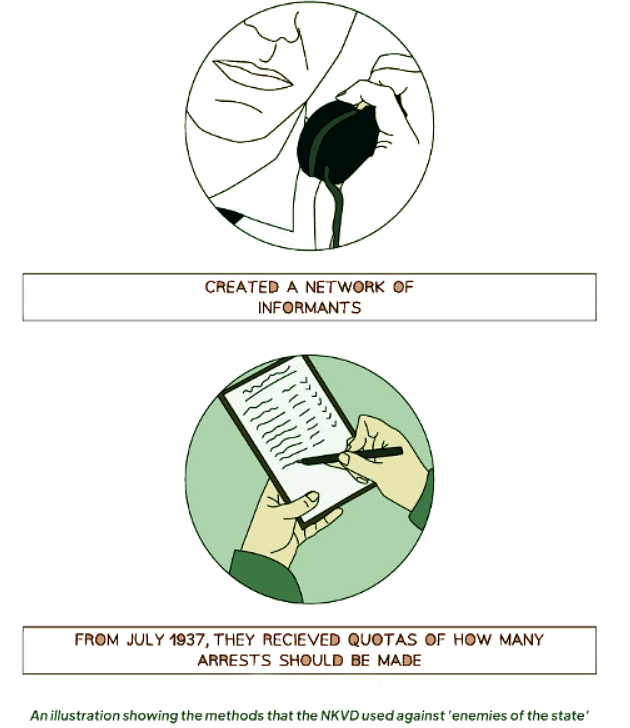
The GULAG System
- The GULAG system, established in 1919, stands for the Chief Administration of Corrective Labour Camps.
- This system comprised forced labor camps known as "lagery" in Russian, with many located in Siberia.
- Administered by the secret police, its primary objectives were:
- To harshly penalize criminals
- To dissuade other individuals from engaging in criminal activities
- To provide the state with unpaid labor
Prisoners in the GULAG System
A diverse range of individuals were imprisoned in the GULAG system, including:
- Political opponents.
- Kulaks and NEPmen.
- Workers accused of sabotage.
- Members of the military.
- Artists who violated censorship rules.
How did the GULAG System Grow?
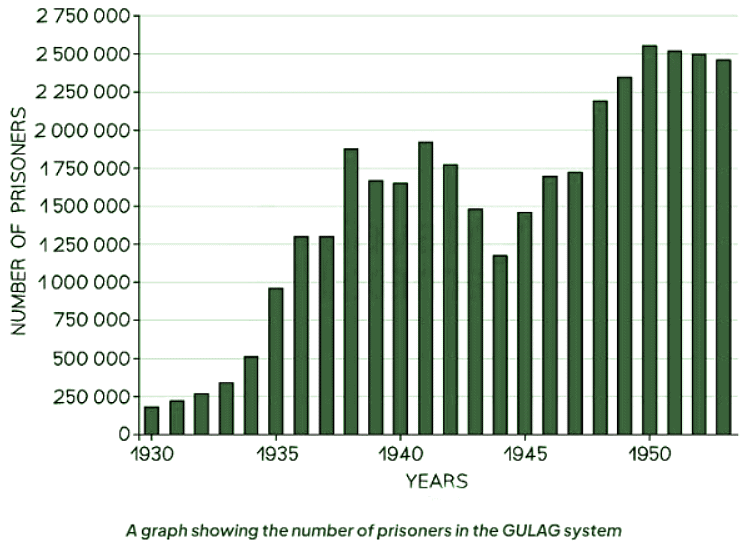
What were Conditions Like in the GULAG System?
- The labor camps endured appalling living conditions.
- Inadequate wooden barracks were severely overcrowded.
- Sanitation facilities were minimal, leading to the rapid spread of diseases.
- The absence of heating resulted in fatal consequences, particularly in the harsh Siberian climate.
- Prisoners were subjected to grueling forced physical labor.
- Unrealistic production quotas were imposed on the prisoners.
- Many succumbed to exhaustion and overwork.
- Food rationing was enforced within the camps.
- Prisoners received varying rations based on their productivity.
- Failure to meet production targets resulted in reduced rations, leading to starvation among prisoners.
Show Trials
- A show trial is a public trial that is staged with a pre-decided outcome. During the Great Purge, Stalin orchestrated high-profile Bolsheviks' show trials.
- The NKVD, under Stalin's regime, used torture tactics to extract confessions from suspects, even if they were innocent of the alleged crimes.
- In these trials, the judge was already informed of the verdict before the trial took place.
The Trial of 16

The Trial of 17

The Trial of 21

Propaganda and the Cult of Stalin
- The Bolsheviks recognized the significance of propaganda.
- Utilizing propaganda posters from the tsarist era, the party aimed to garner support.
- The Soviet government imposed strict censorship on information dissemination.
- Pravda, the communist newspaper, held a monopoly as the sole legal publication in the USSR.
- Western radio broadcasts were prohibited.
- Public events were meticulously controlled to present a favorable image of the USSR.
- Stalin exploited propaganda to depict himself in various roles:
- A deity-like figure
- Affectionately termed 'Uncle Joe' and hailed as the father of the USSR
- Disseminating his image and ideology throughout the nation
- Annual parades commemorating the October Revolution and May Day prominently featured Stalin's imagery and ideology. Participants often showcased images of Stalin or performed in his honor in Moscow's Red Square.
- History was selectively rewritten through propaganda efforts:
- Photographs were doctored to erase individuals deemed 'enemies of the state' during Stalin's reign.
- Textbooks emphasized Lenin and Stalin's roles in the October Revolution while minimizing Trotsky's significance.
Question for Stalin's Methods to Control the Soviet UnionTry yourself: What was the primary purpose of the NKVD during Stalin's era?View Solution
Culture in Stalin's Regime
- Stalin emphasized the significance of controlling Soviet culture to align with the state's ideology. He aimed for artists, writers, and musicians to bolster rather than challenge the government.
- Culture, according to Stalin, held immense power in shaping the beliefs and attitudes of Soviet citizens.
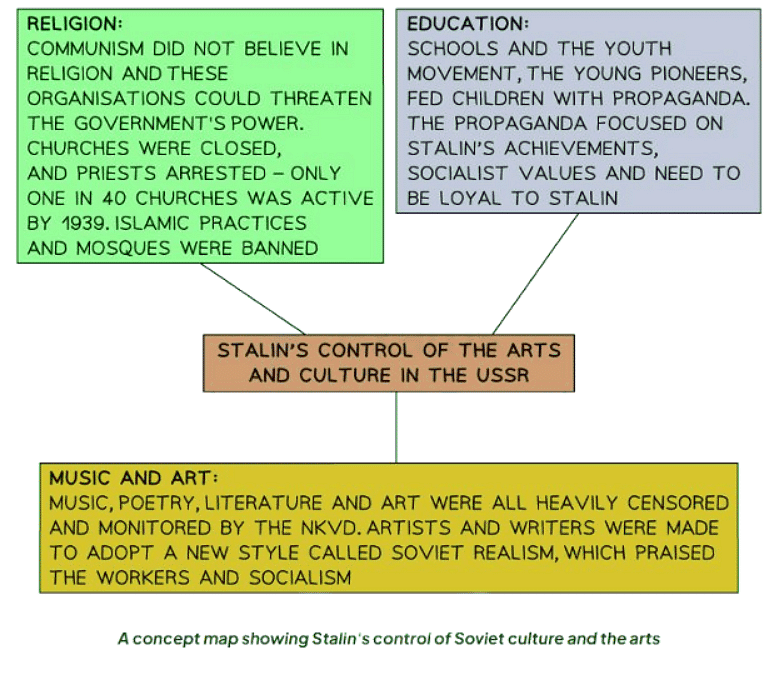
The document Stalin's Methods to Control the Soviet Union | History for GCSE/IGCSE - Class 10 is a part of the Class 10 Course History for GCSE/IGCSE.
All you need of Class 10 at this link: Class 10
|
79 videos|87 docs|18 tests
|
FAQs on Stalin's Methods to Control the Soviet Union - History for GCSE/IGCSE - Class 10
| 1. Did Stalin rule by fear or love? |  |
Ans. Stalin primarily ruled through fear, using tactics such as the NKVD, the GULAG system, show trials, and propaganda to maintain control over the Soviet Union.
| 2. What was the role of the NKVD in Stalin's regime? |  |
Ans. The NKVD was Stalin's secret police force responsible for suppressing dissent, carrying out purges, and enforcing his policies through intimidation and violence.
| 3. How did the GULAG system contribute to Stalin's control over the Soviet Union? |  |
Ans. The GULAG system was a network of forced labor camps where political prisoners and dissenters were sent to perform hard labor under harsh conditions, serving as a tool of repression and control.
| 4. What were show trials in Stalin's regime and how did they impact his rule? |  |
Ans. Show trials were public trials where individuals were accused of crimes against the state, often based on false charges, and were used by Stalin to eliminate perceived threats and instill fear in the population.
| 5. How did propaganda and the cult of Stalin play a role in maintaining his power? |  |
Ans. Stalin's regime used propaganda to create a cult of personality around him, portraying him as a strong and infallible leader, which helped to maintain his power by shaping public perception and loyalty.
Related Searches

